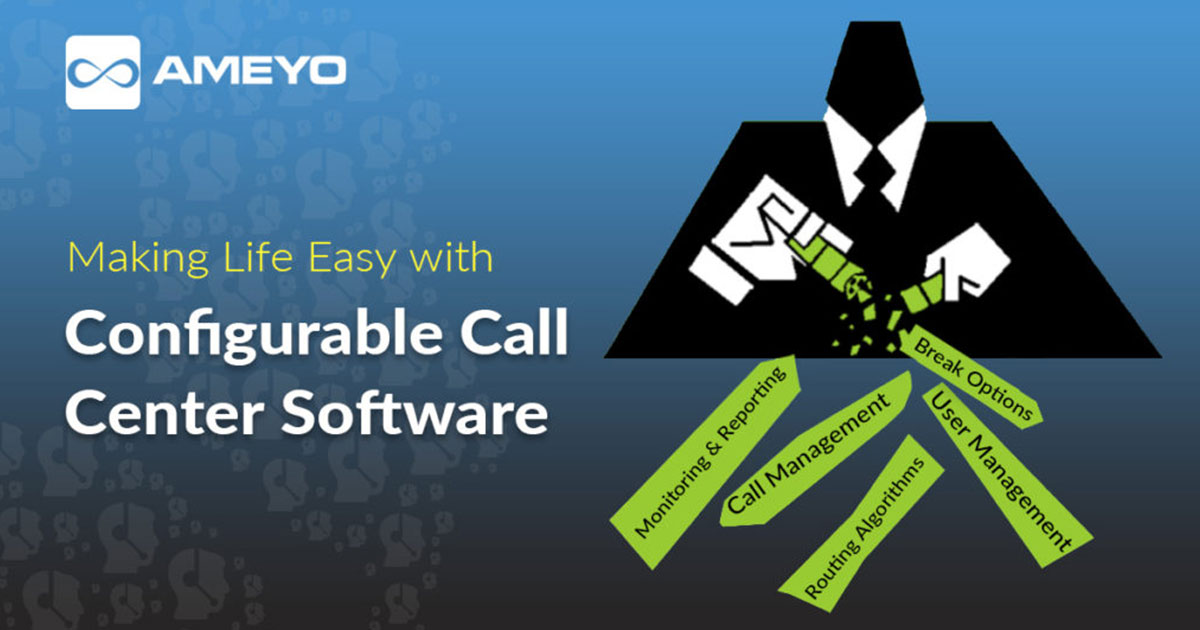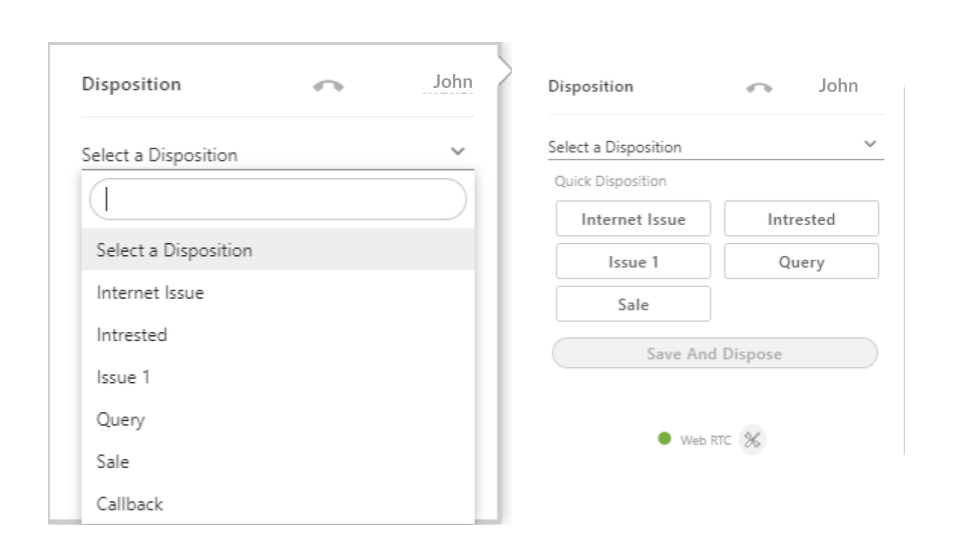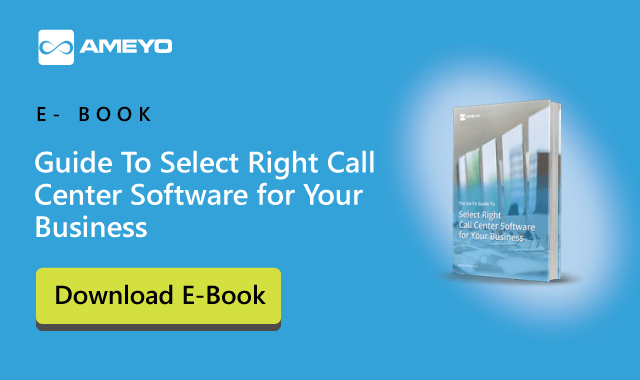What is the first thing that comes to your mind when I say customer care or customer support? Let me just go on a limb and guess – Call center? Am I close or am I closer? Most of us look at a call center as a number of people sitting in front of their computers with headsets, talking on the phone. And you are not wrong. Though, the call centers of yesterday have evolved into Customer Engagement Centers of today – supporting more than one channel (voice) such as email, social media and/or chat.
With this evolution and contact centers becoming an important piece of the customer service puzzle, businesses evaluate the call center software providers with a fine-tooth comb. With varying business requirements, it’s best to go for a software that allows you to do most of the tasks yourselves (agents and supervisors) rather than going back to the provider. Having configurable call center features will make things simple for the managers and thus, ease their workload.
Configuration vs Customization
Both these terms are frequently used in the tech world. Although many confuse the two. Let me define them for better understanding.
Customization means writing a new code that is outside the purview of the existing software or application. That means more effort and higher risk as it calls for the programmers to modify a program or write a program to do something that the software does not presently do.
Configuration refers to using the tools and capabilities already existing in the software to meet the business requirements. That means no need to involve a programmer or writing new code. Hence lesser efforts and less risky as well.
Some Configurable Call Center Features
#1. Agent Break Options
Call center agents’ days are packed with customer interactions, calls and managing non-call work as well. With so much work on their plate, it is obvious that they need a break at times. With a call center management software you can achieve that by deciding what all break options you want to provide to your agents. Not only that, the supervisor can monitor these for each agent. For example, if an agent has been on a break for more than the stipulated time, the supervisor will be able to track that under live monitoring.
#2. Configurable Applications/ CRMs
Have the freedom to integrate any CRM, application and/or Order management or any other system using an omnichannel call center software. With the CRM at their fingertips, the agents can view and edit the customer data in real-time. This two-way sync between your call center software and the CRM will enable pushing and pulling of data from the CRM in real-time.
#3. Call Dispositions
Let us first understand what do we mean by call disposition. Simply put, these are the outcome of a call (inbound/outbound). Usually in a call center, once the call ends the agents have to mark the purpose of the call. You can choose what dispositions to add based on your business requirements. For instance, a call center for Telco will have options like – internet issue, broadband issue, new connection request, etc. Once the supervisor generates the call details report she/he will be able to know the most frequent issues that the customers call for. Which in turn will help them to make them a priority and bring necessary improvements so as to reduce the number of complaints and improve overall customer satisfaction levels.
#4. Setting Your own Call Routes
The most important job of a call center software solution is to resolve the callers’ queries quickly and satisfactorily. The key to doing that is – connecting the caller to the right agent. Imagine a customer called to know their bank account balance but they are connected to the lost credit card department. What will happen then? No prizes for guessing – they will be irritated. As a call center manager, you do not need to rely on your vendor to set these call routing logic, you should be able to configure them on your own. Some of the common routing logics are First In First Out (FIFO), Least Recently Used (LRU) and/or Round-robin. Setting these rules is crucial as they have a direct impact on your brand reputation, customer satisfaction, and agent’s efficiency.
#5. User Role Privileges
The capability to assign privileges to the users (agents or supervisors) to view, manage, edit and update customer interactions. For example, providing the agents with the option to have auto-call on or off. This means if the agent has switched off the auto call button she/he will no longer receive any call. Agents can use this option while performing post-call work. But, if you want the agents to be available to take calls at all times, then the call center manager can revoke this option.
Moreover, as a supervisor, you can move around your agents to different campaigns and queues as per requirement with these call center software features. For example, you observe that presently many customers are waiting in the credit card queue, you can assign more agents to that queue in real-time to manage the peak call traffic.
Conclusion
As can be inferred from today’s discussion, call centers are there to make your customer service a seamless experience for both your customers as well as the agents. Whether you opt for a cloud-based call center solution or an on-premise setup, it is important to choose software that works as a business enabler. It should be able to cater to all your call center needs while empowering your team to manage the operations themselves – without having to go back to your vendor for small issues. The true testament to the right call center software is that it makes its users efficient and independent while keeping customers at the heart of their operations.





